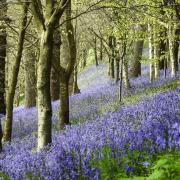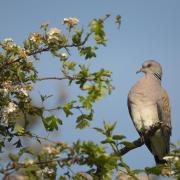A well-run equestrian business contributes to the local economy and maintains the landscape while horses help enrich our cultural and economic life
Country life in Kent
A well-run equestrian business contributes to the local economy and maintains the landscape while horses help enrich our cultural and economic life in Kent
Planning authorities have an uneasy relationship with equestrian businesses
One could sometimes be forgiven for thinking that the horse is the only grazing animal left in the south east. I exaggerate of course, but sheep and cattle do not feature on the Kentish landscape as they once did.
While horses are associated with leisure rather than agriculture or transport, they play an important role in the rural economy. In Kent the Gross Value Added of the horse industry is estimated to be �100m, somewhere between arable and livestock farming.
The horse industry is not particularly well researched, but work undertaken by the British Equestrian Trade Association shows that in 2006 the industry in Britain employed 250,000 people directly and 4.3 million people ride.
The horse population is in the region of 1.35 million, and the density of this population is as high in Kent as anywhere.
Of course the UK has a rich equine heritage, but the links in this part of the world being particularly strong, with renowned racing in neighbouring Sussex at Goodwood, Fontwell Park, Brighton and Plumpton, not to mention the All England jumping course at Hickstead. Pub names throughout Kent bear out the enduring affection for the horse.
It is, however, the lower-profile activities of private horse owners and livery stables which typify equine activity in this county. Commercial stables provide employment, an economically viable use of the land, and support for related businesses. For many, equestrian pursuits may be associated with privilege, but according to the British Horse Society, lower-income groups are represented just as strongly as the better off. Approximately half of all frequent riders live in urban areas. They are not a fair-weather bunch either. Some 95 per cent ride throughout the year (up from 61 per cent in 1995).
There is sometimes justifiable criticism that horses can have an unacceptable impact on the landscape because of over grazing, clutter in the shape of jumps and lorry bodies left in fields, and poor sub division of paddocks with white plastic posts and yards of straggly white tape.
There is also the “poaching” of areas in fields, in other words the churned bare earth which results from many hooves on wet ground. When the ground recovers it tends to get covered in weeds and can look unsightly.
With the above in their minds, planning authorities have an uneasy relationship with equestrian businesses. A negative result of this is their attempt to introduce guidance that does not reflect the fact that stabled horses require less grazing than native ponies, which rely on grass for most of their sustenance.
Sometimes criticisms are justified, but a well-run equestrian business contributes to the local economy and maintains the landscape. The horse fraternity just needs to appreciate that for the non-equine minded, the impact of horses on the landscape can be less than pleasing.
If you are horsey, why not cast a critical eye around your yard and field and see what small changes could be made. Stack jumps tidily, deal with poached areas and their weeds, and do you really need that lorry body? Perhaps your tape could be green rather than white and the posts upright.
Like any enterprise, horse businesses face many challenges, be they in the form of planning, liability, business rates, disease control or exposure to the dreaded ragwort in the summer. I for one believe horses contribute greatly to our cultural and economic life in Kent. Horse lovers and planning authorities both bear responsibility for keeping it that way.


























